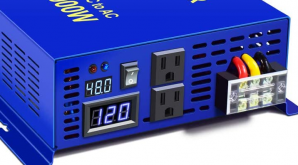redpostbox
New Member
- Joined
- Jan 26, 2021
- Messages
- 8
Hello everyone,
I am a newbie at this and I am still trying to figure out a solar system that works for my future off-grid house.
1) For every sine wave power inverter (assuming it comes with one outlet slot) how many AC outlets can I 'branch out'? Just like a normal house, I would like to have a few outlets in different rooms. Does that mean I need 1 inverter for every AC outlet (which is my presumption now)?
2) If it is possible to have more than 1 AC outlet per inverter, how do I know/ calculate how many AC outlets I can have per inverter?
Many thanks!
Shaun
I am a newbie at this and I am still trying to figure out a solar system that works for my future off-grid house.
1) For every sine wave power inverter (assuming it comes with one outlet slot) how many AC outlets can I 'branch out'? Just like a normal house, I would like to have a few outlets in different rooms. Does that mean I need 1 inverter for every AC outlet (which is my presumption now)?
2) If it is possible to have more than 1 AC outlet per inverter, how do I know/ calculate how many AC outlets I can have per inverter?
Many thanks!
Shaun




